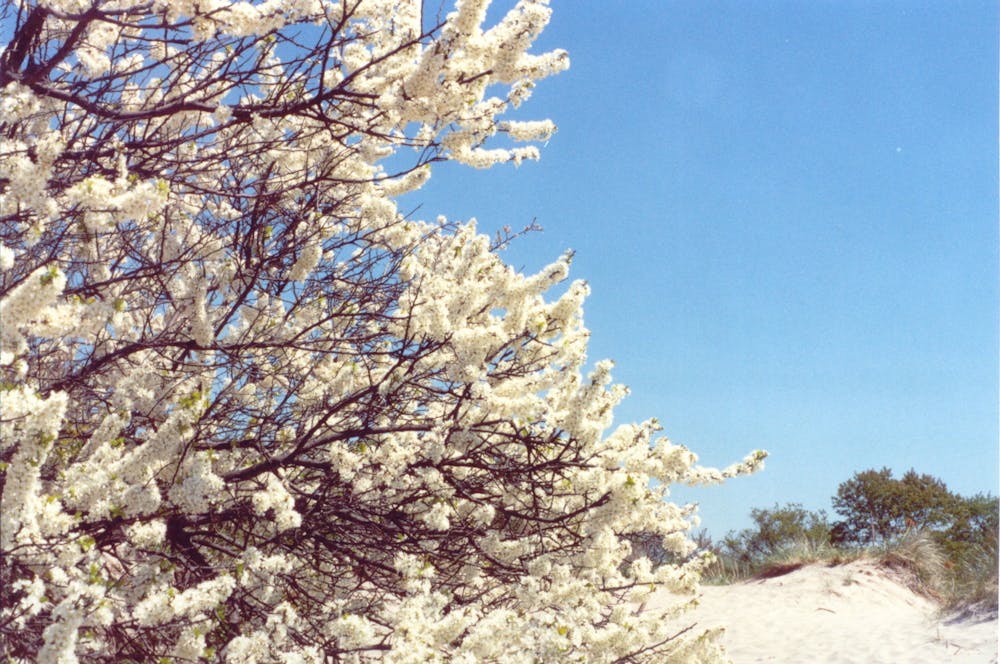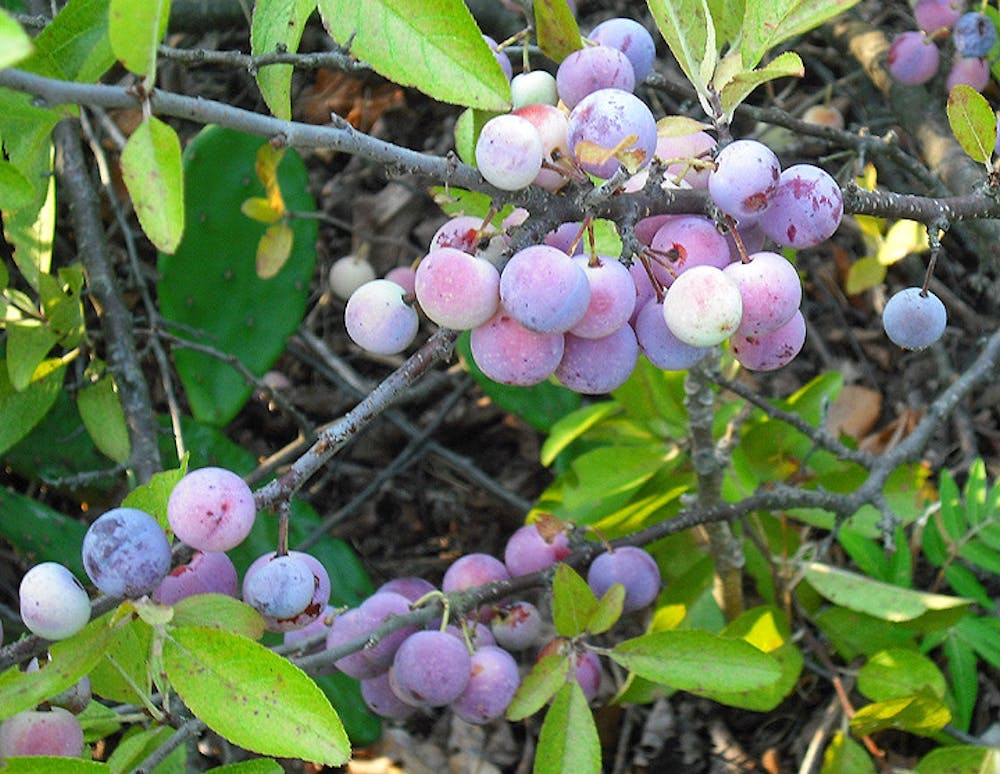By Mike Sherr
Editor-in-Chief
Right below the wooden floor at Morey’s Pier in Wildwood lives a small bush with greenish-yellow oval leaves. Many tourists may have passed it on their way to lie in the sun and did not give it a second thought. But when those tourists go to reach for some chips or pretzels they brought for midday snacks, they miss out on having a handful of delicious fruit grown right on the beach.
Beach plums (Prunus maritima) are a type of stone fruit related to peaches, cherries and (of course) plums. These bushes are native to coastal regions from Maryland to Virginia, but do not necessarily need sandy soil to grow. They are often found on sand dunes but are able to thrive in any well drained and nutrient rich soil, according to Bianca Charbonneau, a former ecology PhD candidate at the University of Pennsylvania.

A blooming Beach Plum plant in the spring at Gateway National Recreational Area in Brooklyn, NY (Photo courtesy of the National Park Service / "Plumb Beach." July 16, 2010).
“Beach plums taste like a mix of strawberry, plum, and apricot with a tart skin,” Charbonneau wrote in an article for the Friends of Island Beach State Park. “‘True’ NJ shore locals know where to go to pick wild beach plums, but they will not divulge the location of their secret spots!”
These edible dune plants tend to take about three years after germination to produce their first harvest. In its third year, the plant will bloom in April or May and start bearing fruit around late June, getting ready for a late August harvest.
After being harvested, the fruit can be made into jams, cordials, gin, vinegar, wine and so many other tasty treats.
While the fruit has obvious culinary promise, the plant itself also has some benefit for the ecosystem it is native to. Beach Plum plants grow wide and deep roots that help stabilize sand dunes on beaches. In the event of strong winds from a hurricane, these roots will make it more difficult for sand to shift and blow away.
After Hurricane Sandy in 2012, coastal managers and municipal governments learned about the benefits of sand dunes at local beaches. As strong waves and winds battered and flattened the dunes on Long Island, hundreds of homes were saved from devastation. Conservationists started planting grasses, succulents and beach plum shrubs in sand dunes to reinforce them against catastrophic hurricanes.
There has been a resurgence of these fruits, with many projects by coastal groups to revitalize the plant in local cuisine and culture. These projects faced challenges such as overdevelopment and have made it difficult to commercialize the native fruit.
The construction of piers and boardwalks has threatened the survival of beach plums in New Jersey. Tourists also pose a threat to dune ecosystems when they climb on or take plants from dune barriers, forcing the state to make it illegal to climb on dunes. These sandy trespassers could receive fines up to $1,000 and can be cited for trespassing.
Even with these challenges, beach plums have made a striking comeback in the state. Check out the Island Beach State Park’s Beach Plum Festival or any of the commercial growers in Cape May County to get a taste of these fruits!




